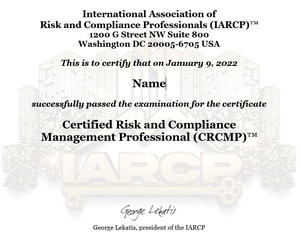Liquidity Risk
What is Liquidity Risk?

In the ordinary course of business, firms enter into contractual obligations that may require future cash payments, including funding for customer loan requests, customer deposit maturities and withdrawals, debt service, leases for premises and equipment, and other cash commitments.
The objective of effective liquidity management is to ensure that firms can meet their contractual obligations and other cash commitments efficiently under both normal operating conditions and under periods of market stress. To help achieve this objective, Boards must establish liquidity guidelines that require sufficient asset-based liquidity to cover potential funding requirements, and to avoid over-dependence on volatile, less reliable funding markets.
According to the Basel Committee, during the early “liquidity phase” of the financial crisis that began in 2007, many banks – despite adequate capital levels – still experienced difficulties because they did not manage their liquidity in a prudent manner.
The crisis again drove home the importance of liquidity to the proper functioning of financial markets and the banking sector.
Prior to the crisis, asset markets were buoyant and funding was readily available at low cost.
The rapid reversal in market conditions illustrated how quickly liquidity can evaporate and that illiquidity can last for an extended period of time.
The banking system came under severe stress, which necessitated central bank action to support both the functioning of money markets and, in some cases, individual institutions.
The difficulties experienced by some banks were due to lapses in basic principles of liquidity risk management. In response, as the foundation of its liquidity framework, the Committee in 2008 published Principles for Sound Liquidity Risk Management and Supervision (“Sound Principles”).
The Sound Principles provide detailed guidance on the risk management and supervision of funding liquidity risk and should help promote better risk management in this critical area, but only if there is full implementation by banks and supervisors. As such, the Committee will coordinate rigorous follow up by supervisors to ensure that banks adhere to these fundamental principles.
To complement these principles, the Committee has further strengthened its liquidity framework by developing two minimum standards for funding liquidity. These standards have been developed to achieve two separate but complementary objectives.
The first objective is to promote short-term resilience of a bank’s liquidity risk profile by ensuring that it has sufficient high-quality liquid assets to survive a significant stress scenario lasting for one month. The Committee developed the Liquidity Coverage Ratio (LCR) to achieve this objective.
The second objective is to promote resilience over a longer time horizon by creating additional incentives for banks to fund their activities with more stable sources of funding on an ongoing basis. The Net Stable Funding Ratio (NSFR) has a time horizon of one year and has been developed to provide a sustainable maturity structure of assets and liabilities.
These two standards are comprised mainly of specific parameters which are internationally “harmonised” with prescribed values. Certain parameters, however, contain elements of national discretion to reflect jurisdiction-specific conditions. In these cases, the parameters should be transparent and clearly outlined in the regulations of each jurisdiction to provide clarity both within the jurisdiction and internationally.
It should be stressed that the standards establish minimum levels of liquidity for internationally active banks. Banks are expected to meet these standards as well as adhere to the Sound Principles. Consistent with the Committee’s capital adequacy standards, national authorities are free to require higher minimum levels of liquidity.
Learning from the Annual Reports
Liquidity Risk, important parts from the 2021 Annual Report, Scotiabank
Liquidity Risk
Liquidity risk is the risk that the Bank is unable to meet its financial obligations in a timely manner at reasonable prices. Financial obligations include liabilities to depositors, payments due under derivative contracts, settlement of securities borrowing and repurchase transactions, and lending and investment commitments.
Effective liquidity risk management is essential to maintain the confidence of depositors and counterparties, manage the Bank’s cost of funds and to support core business activities, even under adverse circumstances.
Liquidity risk is managed within the framework of policies and limits that are approved by the Board of Directors. The Board receives reports on risk exposures and performance against approved limits. The Asset-Liability Committee (ALCO) provides senior management oversight of liquidity risk.
The key elements of the liquidity risk framework are:
• Measurement and modeling – the Bank’s liquidity model measures and forecasts cash inflows and outflows, including off-balance sheet cash flows on a daily basis. Risk is managed by a set of key limits over the maximum net cash outflow by currency over specified short-term horizons (cash gaps), a minimum level of core liquidity, and liquidity stress tests.
• Reporting – Global Risk Management provides independent oversight of all significant liquidity risks, supporting the ALCO with analysis, risk measurement, stress testing, monitoring and reporting.
• Stress testing – the Bank performs liquidity stress testing on a regular basis, to evaluate the effect of both industry-wide and Bank-specific disruptions on the Bank’s liquidity position. Liquidity stress testing has many purposes including:
– Helping the Bank understand the potential behavior of various on-balance sheet and off-balance sheet positions in circumstances of stress; and
– Based on this knowledge, facilitating the development of risk mitigation and contingency plans. The Bank’s liquidity stress tests consider the effect of changes in funding assumptions, depositor behavior and the market value of liquid assets. The Bank performs industry standard stress tests, the results of which are reviewed at senior levels of the organization and are considered in making liquidity management decisions.
• Contingency planning – the Bank maintains a liquidity contingency plan that specifies an approach for analyzing and responding to actual and potential liquidity events. The plan outlines an appropriate governance structure for the management and monitoring of liquidity events, processes for effective internal and external communication, and identifies potential counter measures to be considered at various stages of an event. A contingency plan is maintained both at the parent-level as well as for major subsidiaries.
• Funding diversification – the Bank actively manages the diversification of its deposit liabilities by source, type of depositor, instrument, term and geography.
• Core liquidity – the Bank maintains a pool of highly liquid, unencumbered assets that can be readily sold or pledged to secure borrowings under stressed market conditions or due to Bank-specific events. The Bank also maintains liquid assets to support its intra-day settlement obligations in payment, depository and clearing systems.
Liquid assets
Liquid assets are a key component of liquidity management and the Bank holds these types of assets in sufficient quantity to meet potential needs for liquidity management.
Liquid assets can be used to generate cash either through sale, repurchase transactions or other transactions where these assets can be used as collateral to generate cash, or by allowing the asset to mature.
Liquid assets include deposits at central banks, deposits with financial institutions, call and other short-term loans, marketable securities, precious metals and securities received as collateral from securities financing and derivative transactions. Liquid assets do not include borrowing capacity from central bank facilities.
Marketable securities are securities traded in active markets, which can be converted to cash within a timeframe that is in accordance with the Bank’s liquidity management framework. Assets are assessed considering a number of factors, including the expected time it would take to convert them to cash.
Marketable securities included in liquid assets are comprised of securities specifically held as a liquidity buffer or for asset liability management purposes; trading securities, which are primarily held by Global Banking and Markets; and collateral received for securities financing and derivative transactions.
Liquidity Risk, important parts from the 2021 Annual Report, Lloyds Banking Group plc
Liquidity risk is defined as the risk that the Group has insufficient financial resources to meet its commitments as they fall due, or can only secure them at excessive cost.
Liquidity risk is managed through a series of measures, tests and reports that are primarily based on contractual maturity.
The Group carries out monthly stress testing of its liquidity position against a range of scenarios. The Group’s liquidity risk appetite is also calibrated against a number of stressed liquidity metrics.
FUNDING AND LIQUIDITY RISK
DEFINITION
Funding risk is defined as the risk that the Group does not have sufficiently stable and diverse sources of funding or the funding structure is inefficient. Liquidity risk is defined as the risk that the Group has insufficient financial resources to meet its commitments as they fall due, or can only secure them at excessive cost.
EXPOSURE
Liquidity exposure represents the potential stressed outflows in any future period less expected inflows. The Group considers liquidity exposure from both an internal and a regulatory perspective.
MEASUREMENT
Liquidity risk is managed through a series of measures, tests and reports that are primarily based on contractual maturities with behavioural overlays as appropriate. Note 51 on page F-121 sets out an analysis of assets and liabilities by relevant maturity grouping. The Group undertakes quantitative and qualitative analysis of the behavioural aspects of its assets and liabilities in order to reflect their expected behaviour.
MITIGATION
The Group manages and monitors liquidity risks and ensures that liquidity risk management systems and arrangements are adequate with regard to the internal risk appetite, Group strategy and regulatory requirements. Liquidity policies and procedures are subject to independent internal oversight by Risk. Overseas branches and subsidiaries of the Group may also be required to meet the liquidity requirements of the entity’s domestic country.
Management of liquidity requirements is performed by the overseas branch or subsidiary in line with Group policy. Liquidity risk of the Insurance business is actively managed and monitored within the Insurance business. The Group plans funding requirements over its planning period, combining business as usual and stressed conditions.
The Group manages its liquidity position both with regard to its internal risk appetite and the Liquidity Coverage Ratio (LCR) as required by the PRA, the Capital Requirements Directive (CRD IV) and the Capital Requirements Regulation (CRR) liquidity requirements. The Group’s funding and liquidity position is underpinned by its significant customer deposit base, and is supported by strong relationships across customer segments.
The Group has consistently observed that in aggregate the retail deposit base provides a stable source of funding. Funding concentration by counterparty, currency and tenor is monitored on an ongoing basis and where concentrations do exist, these are managed as part of the planning process and limited by the internal funding and liquidity risk monitoring framework, with analysis regularly provided to senior management.
To assist in managing the balance sheet, the Group operates a Liquidity Transfer Pricing (LTP) process which: allocates relevant interest expenses from the centre to the Group’s banking businesses within the internal management accounts; helps drive the correct inputs to customer pricing; and is consistent with regulatory requirements. LTP makes extensive use of behavioural maturity profiles, taking account of expected customer loan prepayments and stability of customer deposits, modelled on historic data.
The Group can monetise liquid assets quickly, either through the repurchase agreements (repo) market or through outright sale. In addition, the Group has pre-positioned a substantial amount of assets at the Bank of England’s Discount Window Facility which can be used to access additional liquidity in a time of stress. The Group considers diversification across geography, currency, markets and tenor when assessing appropriate holdings of liquid assets. The Group’s liquid asset buffer is available for deployment at immediate notice, subject to complying with regulatory requirements.
Liquidity risk within the Insurance business may result from: the inability to sell financial assets quickly at their fair values; an insurance liability falling due for payment earlier than expected; the inability to generate cash inflows as anticipated; an unexpected large operational event; or from a general insurance catastrophe, for example, a significant weather event. Liquidity risk is actively managed and monitored within the Insurance business to ensure that it remains within approved risk appetite, so that even under stress conditions, there is sufficient liquidity to meet obligations.
MONITORING
Daily monitoring and control processes are in place to address internal and regulatory liquidity requirements. The Group monitors a range of market and internal early warning indicators on a daily basis for early signs of liquidity risk in the market or specific to the Group.
This captures regulatory metrics as well as metrics the Group considers relevant for its liquidity profile. These are a mixture of quantitative and qualitative measures, including: daily variation of customer balances; changes in maturity profiles; funding concentrations; changes in LCR outflows; credit default swap (CDS) spreads; and basis risks.
The Group carries out internal stress testing of its liquidity and potential cash flow mismatch position over both short (up to one month) and longer-term horizons against a range of scenarios forming an important part of the internal risk appetite. The scenarios and assumptions are reviewed at least annually to ensure that they continue to be relevant to the nature of the business, including reflecting emerging horizon risks to the Group.
The Group maintains a Contingency Funding Framework as part of the wider Recovery Plan which is designed to identify emerging liquidity concerns at an early stage, so that mitigating actions can be taken to avoid a more serious crisis developing. Contingency Funding Plan invocation and escalation processes are based on analysis of five major quantitative and qualitative components, comprising assessment of: early warning indicators; prudential and regulatory liquidity risk limits and triggers; stress testing results; event and systemic indicators; and market intelligence.
You may also visit:
The Role of the Risk Officer: https://www.risk-officer.com/Role_Of_Risk_Officer.html
Credit Risk: https://www.risk-officer.com/Credit_Risk.htm
Market Risk: https://www.risk-officer.com/Market_Risk.htm
Operational Risk: https://www.risk-officer.com/Operational_Risk.htm
Systemic Risk: https://www.risk-officer.com/Systemic_Risk.htm
Political Risk: https://www.risk-officer.com/Political_Risk.htm
Strategic Risk: https://www.risk-officer.com/Strategic_Risk.htm
Conduct Risk: https://www.risk-officer.com/Conduct_Risk.htm
Reputation Risk: https://www.risk-officer.com/Reputation_Risk.htm
Liquidity Risk: https://www.risk-officer.com/Liquidity_Risk.htm
Cyber Risk: https://www.risk-officer.com/Cyber_Risk.htm
Climate Risk: https://www.risk-officer.com/Climate_Risk.htm
Emerging Risk: https://www.risk-officer.com/Emerging_Risk.htm
Membership and certification
Become a standard, premium or lifetime member. Get certified.
In the Reading Room (RR) of the association you can find our weekly newsletter - "Top risk and compliance management news stories and world events, that (for better or for worse) shaped the week's agenda, and what is next". Our Reading Room


